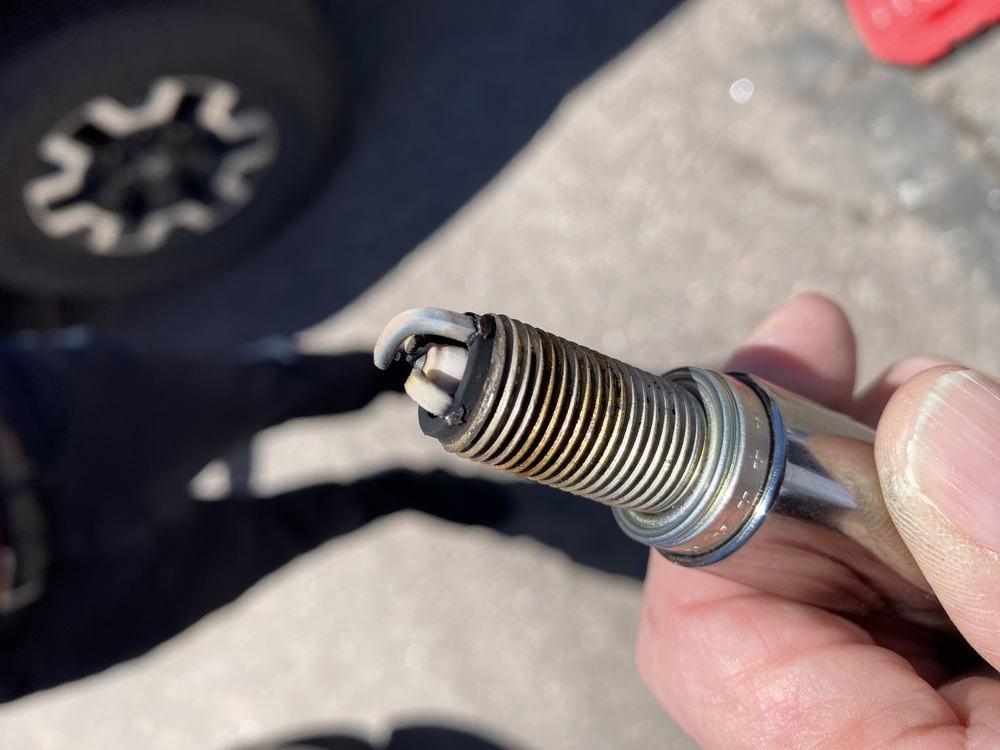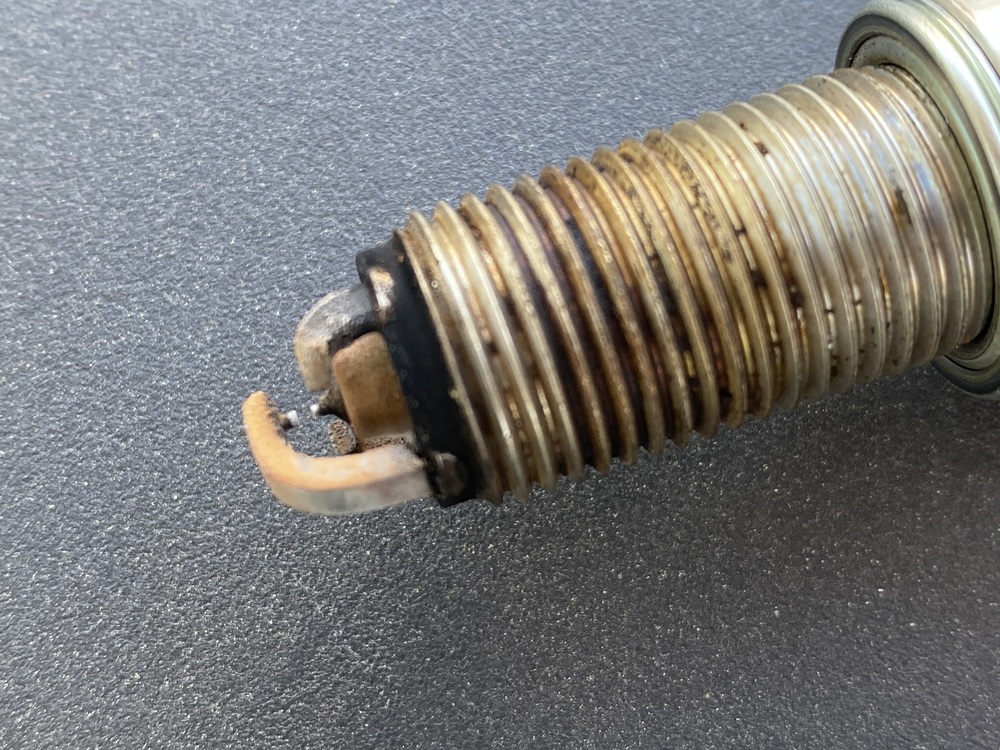2019 Tacoma TRD Off Road 60K Service
|
|
One thing you didn't mention is what engine you have, whether it's the I4 or V6. That could help determine what your spark plug change interval should be. If it's the V6, 60k is the correct interval and it's important to use OEM Denso plugs if you decide to DIY or take it to an independent shop. Some owners have reported loss of MPG's and performance using other branded plugs. They are more time consuming to change on the 3rd gen Tacoma vs 1st and 2nd gen. With regards to the engine and cabin air filter, those are easy for someone with a little aptitude and no wrenching experience to change. YouTube is your friend on this one. Changing the all 3 differential oils are also important and easy to do. If you can change your own oil, you can change own diff fluid. There are small metal shavings that accumulate during the break-in cycle from the meshing of the gears (completely normal). I would understand if one does not want to get underneath the truck and get dirty though. Diff oil is also smelly and of course you would need to find a place to recycle it as with all fluids. All services outlined are necessary and any dealer is going to be expensive. Everything can be done for much cheaper, but you would have to DIY or find a trusted indy mechanic. |
|
|
James Scully wrote: 2GR-FKS. Curious if replacing the plugs at 60K is only for maintaining the federal emissions warranty? Or is there a more compelling reason? I haven't noticed any reduction in performance or MPG that I can think of. Admittedly I mostly play grandfather these days, and drive the truck very little for city driving (maybe 40 to 50 miles per week). It takes me like 2 weeks to go through a tank of gas. Cheers. |
|
|
Julian Smith wrote: I think it’s more of a happy medium. There’s no reason to replace at 36,000m other than some dumb federal emissions garbage when they wont be wearing out until 80,000m. They probably really need to be replaced at 80, but they know people are lazy and will put it off. So they recommend 60. |
|
|
Julian Smith wrote: The part that always baffles me is "Lubricate propeller shaft (4WD)." My 2G Tacoma had grease fittings, but I've crawled under the newer one with light and mirror and exploring fingers a few times and have never found one. |
|
|
Julian Smith wrote: Okay, that is indeed the V6. Replacing the plugs at 60k is recommended to mainly to retain top performance of the engine and for the possibility of an arising warranty issue. This engine uses iridium tip plugs, and these are normally rated to 80k-100k change intervals. Accessing the plugs is a bit of a "job" and probably why Toyota decided to go with the iridium vs copper plugs as they did on the previous generations for much longer change intervals. Worn plugs generally show a very gradual degrade in performance. These Tacoma engines do have a good degree of tolerance and general adaptability with the ECU able to micro-adjust the timing and whatnot. All this means is that you can stretch the interval out somewhat without any serious detriment to the engine, emissions, or performance. If it were my truck though, I would at least pull a plug out, check the gap (spec is 0.031 in) and inspect to ensure there's no abnormalities with the combustion. If all is good to go, I see no reason not to extend running them for another 20-40k. "Lubricating the propeller shaft" is in other words known as greasing the u-joints on the drive shaft. I know Toyota did away with greasable u-joints and went with the better lifelong sealed u-joints at some point in the 3rd gen, but I forgot which year. This is because no one ever greased them and u-joint failures and drive-shaft play were becoming common, (mainly at the rear differential end). I would look under your truck and check the u-joints on the rear drive shaft to see you have grease nipples on the u-joints. If not, cross that task out, but you do, then it wouldn't hurt to stick a grease gun on them. |
|
|
car maintenance is expensive. get a book, use the internet and learn to do it yourself. you might have to invest in some tools, but it quickly pays off... |
|
|
curt86iroc wrote: Exactly! Those 60,000 mile charges are out of control. Dealers should be avoided for all but warranted work. On my new 2020 Tundra, I used the dealers free oil changes for 30,000 miles. They changed it at every 10,000. When it came time to pay for my first one, I drove down to my local (honest) mechanic, not a dealer. I told him I was doing 10,000 mile changes, and he said to stop doing that immediately, and switch to every 5,000, despite 10,000 being recommended. Simple car maintenance like oil and gear box fluid changes, spark plugs, brakes, starters, radiators, alternators are all basic life skills you should teach your kids. If no one taught you, it's all over youtube. I once couldn't find one of the starter bolts on my 91 corolla. Youtube to the rescue! Another old school mechanic trick is to grease all the suspension joints twice a year. Get a needle fitting for a grease gun. They don't use zerk fittings anymore, but the needle can squirt grease in all those joints, enter from the back side of the rubber boot. I've never had a suspension joint go bad in 50 years of driving. |
|
|
Mark Webster wrote: obviously you don't own chevys ;) |
|
|
curt86iroc wrote: …or go off-road! |
|
|
Mark Webster wrote: I have a 3.6L V-6 in my Jeep. Changing the spark plugs is simple - once you can get at them. On one side of the engine it's trivial; on the other side you get to remove the intake manifold (and the other stuff blocking it). That's why it's a $400 job. |
|
|
abandon moderation wrote: The amount of metal in the oil which damages components will persist regardless of whether or not it's synthetic. Changing the oil is the only way to get that shit out of there. 5k oil changes are probably about as long as you'd want to go. |
|
|
I've owned a bunch of different Toyotas, currently a Sequoia and a Prius. Best thing I ever did for my car-related financial health was find a trustworthy, non-dealer mechanic who specialized in Toyotas. Not only is his price for the same repair about 50% less than the deal, but he also isn't always trying to sell me on unnecessary procedures. |
|
|
Ricky Harline wrote: Many engineers would disagree….many mechanics would agree. |
|
|
Pulled the sparkplug on cylinder 5, I think... the one closest to the dash on the passenger side... Here is what it looks like. Any advice? Thanks. |
|
|
Julian Smith wrote: Did you just pull one plug for some reason? Or just asking about this one? It looks perfectly normal to me for a slightly used spark plug. But, as said above, always worth replacing consumables when you have gone to the trouble to get in there. |
|
|
Andrew Rice wrote: Nah, just pulled the easiest plug out of curiosity. Trying to get myself into wrenching on this thing, since that has not been something I have done a lot of in the past. Really had no context for what looks good or bad for a plug, so I was asking for some advice. For what it's worth, I took the truck to Discount Tire and got a rotate and balance for free yesterday. This surprised me, and I tried to pay, but they said I would be back to get some new tires from them soon enough. Checked the air filter today at lunch, when we pulled the plug. It looks really clean. Pulled the cabin air filter, and it is full of junk. Knocked all the crap out of it, but I am going to replace it tomorrow, $17 I think from Auto Zone. I am way far ahead so far for the $1600 the dealership was asking for the 60K service. Thanks for the reply. |
|
|
Julian Smith wrote: They don’t call em stealerships for nothing |
|
|
Ezra Ellis wrote: True. Dealerships mostly break even or even lose money on car sales. They make money providing warranty service and, even more, after warranty repairs and service. |
|
|
Car dealerships make money on service and warranty work…. selling loans… selling used vehicles… roughly 8% on sales of new vehicles |
|
|
So when I blithely assured you that changing the spark plugs was not particularly difficult, I was referring to my experiences with the 1GR-FE V6. Having just now dealt with the plugs in my 2GR-FKS ($90 for 6, by the way), I am reconsidering my earlier assessment. If you don't follow the official Toyota procedure (removing the intake air surge tank assembly) every step of the procedure is still possible, but just barely possible. The clumsiest part is getting at the lower bolt in the rear intake plenum bracket. Make sure that you have a magnetic spark plug socket and an array of locking extensions. One thing I wished for repeatedly was a magnetic 10mm socket. Lots of the fasteners, such as the ignition coil fixing bolts, and bolts in brackets as well as the foam insulation block over #6, have 10mm heads and aren't accessible with two hands or in some cases even one. It would be easier to remove and replace them, without dropping them, with a magnetic socket. Good lighting is essential. |

 Continue with onX Maps
Continue with onX Maps Sign in with Facebook
Sign in with Facebook


























